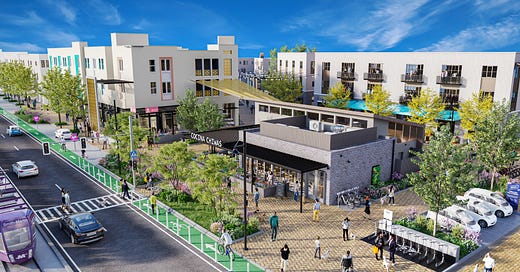The Rise of Car-Light Communities
Meet the developers rethinking the role of cars in some unexpected places
Thesis Driven is a newsletter series that dives deep into emerging themes and real estate operating models by featuring a handful of GPs executing on each theme. The deep dives will give an investor enough context to understand the trend as well as opportunities for personal introductions to relevant GPs actively executing on opportunities. This week’s theme is on “car-light” communities.
It’s rare to find an opportunity in real estate where social impact, financial returns, and consumer preferences are all trending in the same direction. But that’s the landscape developers are encountering as they build mixed-use developments that de-prioritize cars. A small but growing cohort of GPs are creating these communities, often in unexpected locations. Today, we’re going to profile four developers building new places that put cars in the back seat.
To understand what these developers are doing and why they’re doing it, we have to briefly discuss New Urbanism, an architectural movement which has gained momentum over the past several decades. The Congress for the New Urbanism describes it as:
New Urbanism is a planning and development approach based on the principles of how cities and towns had been built for the last several centuries: walkable blocks and streets, housing and shopping in close proximity, and accessible public spaces.
In short: fewer cars, more open space, and moderate built density. The center of a small European city or an early 20th century New England town, perhaps. While the movement arose specifically as a rejection of mid-century suburban sprawl, it also eschews the higher densities typical of American CBDs.
While New Urbanism is not new, there is increasing evidence that the designs it promotes are gaining broader consumer interest. In surveys (including the NAR’s annual report), walkability is a consistently high priority for renters and buyers alike, although it is less clear how willing people are to trade off home size and space for access to local amenities by foot. Regardless, walkability has become a key selling point when pitching a neighborhood to prospective residents; apartment search sites prominently display a building’s “Walk Score” on landing pages.
There are other trends working in walkability’s favor. For one, more young people are choosing to delay driving: the percentage of 18 year olds holding drivers’ licenses dropped from 80.4% in 1983 to 60.9% in 2018. (Joel Anderson, one of the GPs I will feature later in this letter, has a robust summary of the arguments for car-light communities on his excellent Substack here.)




